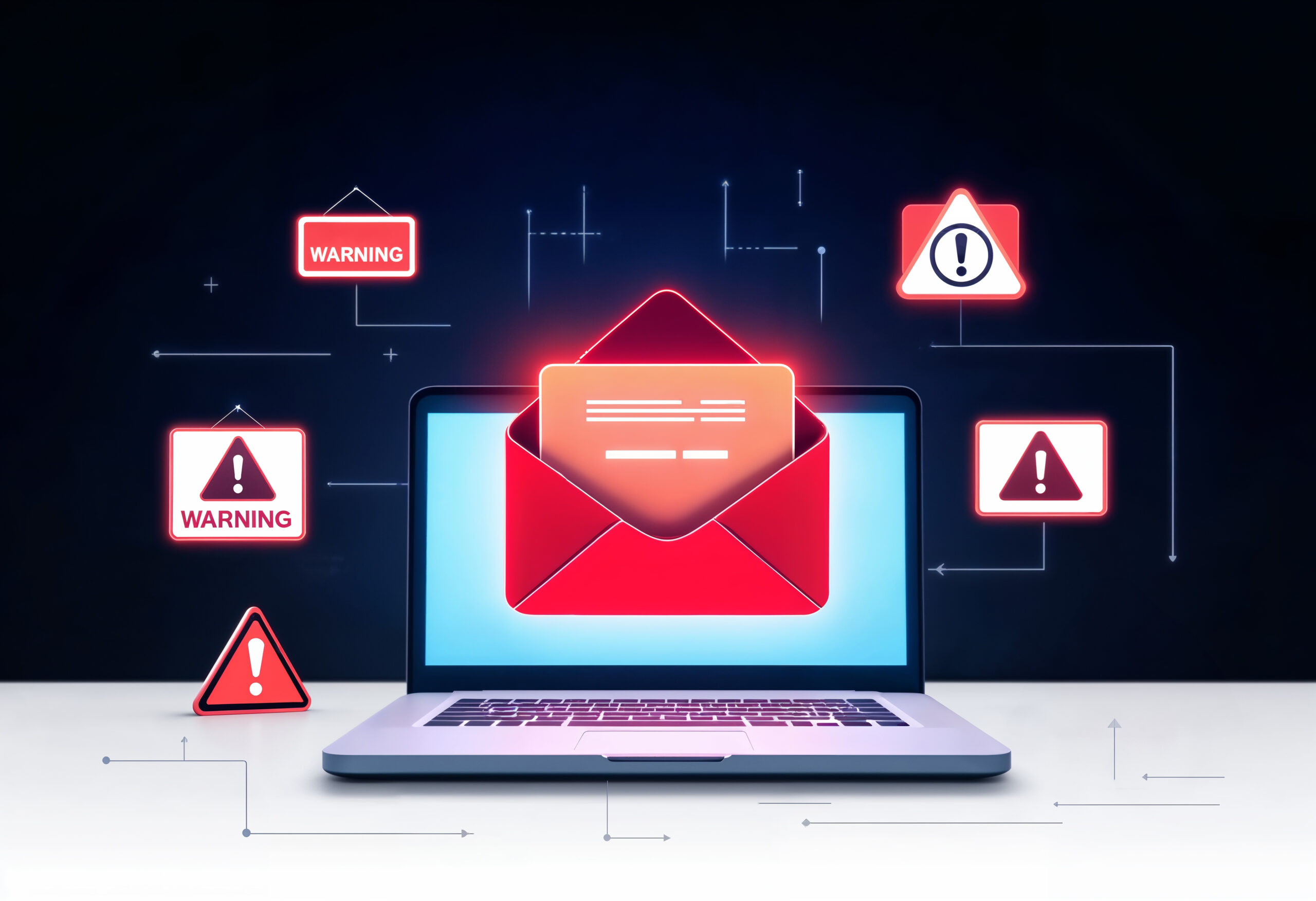Phishing scams keep getting more sophisticated, and one of the most aggressive tactics right now is the removed email scam. This type of phishing attack is designed to make you believe your email account will be deleted, pushing you to act fast and click on a fake link.
These attacks are becoming more frequent. Just in the last quarter of 2024, the Anti-Phishing Working Group (APWG) reported 989,123 phishing attempts, a clear increase from the previous quarter’s 932,923. In this post, you’ll learn exactly how this scam works, how to spot it, and what steps you can take to stay protected.
Need support after a scam? Join our community today.
What Is the Removed Email Scam & How Does It Work?
The removed email scam is a type of phishing attack that falsely announces your email account is about to be eliminated. The message usually claims this action was requested by you or triggered by inactivity and pressures you to act immediately.
These emails often include your real email address, copy the layout of services like Gmail or Outlook, and use urgent language to make you panic. Their goal is simple: steal your login credentials or install malware. Here is how it works:
1. You receive a fake alert
The email claims your account will be deleted in 24 to 48 hours. It might mention “security policies” or “account inactivity” or say that you requested the removal. The goal is to confuse you and make you feel something serious is about to happen.
2. There’s a clear call to action
These emails always include a big button or link with phrases like:
- “Cancel Deletion”
- “Keep My Account Active”
- “Verify Now”
3. You’re taken to a fake login page
Once you click, you’re redirected to a fake site. It looks almost identical to your actual provider’s sign-in page. You may not notice anything strange; the layout, colors, and logos are often spot-on.
4. Your credentials are captured
As soon as you enter your login details, scammers gain access. From that moment, they can:
- Take over your inbox.
- Reset passwords to other services.
- Steal sensitive documents or financial info.
How Can You Know If an Email Is a Scam?
Knowing how to spot scam emails can save you from giving away your data without even realizing it. These messages are designed to look legitimate, but there are always warning signs if you know where to look. Here are the most common warning signs:
- Urgency or Threats: Messages that demand immediate action, like “You have 24 hours to respond!” are classic phishing tactics. The idea is to scare you into skipping due diligence.
- Generic Salutations: Instead of using your name, these emails often say “Dear User” or “Dear Customer”, another sign that it’s mass-targeted.
- Suspicious Links: Before clicking, hover your mouse over the link. If the URL looks strange or doesn’t match the real website, don’t trust it. For example, a fake Microsoft email might link to something like: firebasestorage.googleapis.com/
- Grammar or Formatting Errors: Even though some phishing emails are very professional these days, many still contain awkward grammar, strange punctuation, or odd formatting.
- No Reference to Real Activity: Legitimate service providers usually reference recent activity or account details. These scam emails are vague.
What Subject Lines Are Used in the Removed Email Scam?
Scammers know that the subject line is your first point of contact, and they design it to trigger urgency, fear, or curiosity. These phishing subject lines are carefully chosen to make you click without thinking. Here are some real examples used in removed email scam campaigns:
- “Account Removal Request Approved”.
- “Final Warning: Email Scheduled for Deletion”.
- “Confirmation Required: Account Deactivation”.
- “Your Account Will Be Removed in 24 Hours”.
What Happens If You Click the Link?
Clicking the link in a removed email scam can expose you to more than just a fake login page. Even a single click can lead to serious consequences, some of them immediate. Here’s what might happen:
- Your login credentials are stolen: If you enter your email and password, the scammers gain full access to your inbox. From there, they can read personal or financial emails, reset passwords to other services, or send scam emails to your contacts.
- Malware is installed: Sometimes, the link doesn’t need you to enter anything. Just visiting the phishing site can trigger a download that installs malware or spyware on your device.
- Your workplace could be affected: If you’re using a company device or email, attackers might try to access internal systems through your account, putting your organization at risk of an email breach.
Have questions about dealing with scams? Contact us for support.
What Should You Do If You Receive a Removed Email Scam?
If a removed email scam lands in your inbox, the most important thing is to stay calm and avoid interacting with it. Even if the email looks convincing, taking a moment to double-check before clicking can save you from a serious breach. Here’s exactly what you should do to protect yourself:
- Do not click anything: Don’t open links, don’t download attachments, and don’t hit “unsubscribe.” Even those can trigger malicious actions.
- Report the email: Forward the message to trusted sources so they can investigate or block it.
- Your email provider’s abuse team or support inbox
- Mark it as phishing: Use the “Report phishing” or “Mark as suspicious” option inside your email app (Gmail, Outlook, etc.). This helps improve detection for others.
- Delete the message: Once reported, move it to your trash and empty the folder to prevent accidental clicks later.
- Run a full security scan: If you click anything, immediately run an antivirus and malware scan on your device. This can catch infections before they do more harm.
How to Stay Safe from Email Scams?
Avoiding scams like the removed email scam doesn’t require technical skills; just a few smart habits can make a big difference. Here’s what you can do to reduce your risk:
- Use Two-Factor Authentication (2FA): Prevent unauthorized access even if someone gets your password, requiring a second verification method like a code sent to your phone.
- Stay informed: Learn the new phishing protection techniques by following cybersecurity blogs like Cryptoscam Defense Network or use services like Have I Been Pwned.
- Don’t reuse passwords: Use a password manager to create and store unique passwords for each account securely.
- Install security software: Protect your devices with antivirus tools, firewalls, and browser extensions that detect phishing websites.
Real Remove Email Case: How a Gmail Scam Nearly Fooled a Senior
A scam doesn’t need to be complex to be effective, and this real-life example reported by WFMY News 2 shows just how believable the removed email scam can seem:
What Happened?
In Greensboro, North Carolina, a 76-year-old woman received an email alert claiming her Gmail account would be deleted in 18 days because she was “too young” to manage it. The fake message urged her to update her birthdate by clicking a suspicious link.
The email looked official. It used Gmail branding, formal language, and a sense of urgency that made the warning feel legitimate.
How Did She Respond?
Thankfully, instead of clicking, she asked for help. A local consumer reporter advised her to ignore the message and go directly to the official Gmail login page to check for any real issues.
The Real Lesson Behind the Scam
Scammers use strange but believable excuses to make you act quickly. In this case, it was about age; in others, it might be account activity or policy changes.
Never Click Unless You’re Sure
No matter how real an email looks, never click on links or buttons if something feels off. Go straight to the source, whether it’s Gmail, your bank, or any other platform.
Recognize the Removed Email Scam with Cryptoscam Defense Network
The removed email scam is a clear reminder that your inbox can be a target. Always question emails that pressure you to act fast, especially when email security or account access is involved. A single click can cost you more than just an email, it can open the door to your entire digital life.
If you’re concerned about online scams beyond email, it’s worth checking out the Cryptoscam Defense Network. As a trusted resource for fraud detection, our focus is on providing the knowledge and fraud prevention resources you need to protect your digital investments.
We Want to Hear From You!
Fraud recovery is hard, but you don’t have to do it alone. Our community is here to help you share, learn, and protect yourself from future frauds.
Why Join Us?
- Community support: Share your experiences with people who understand.
- Useful resources: Learn from our tools and guides to prevent fraud.
- Safe space: A welcoming place to share your story and receive support.
Find the help you need. Join our Facebook group or contact us directly.
Be a part of the change. Your story matters.
Frequently Asked Questions (FAQs) About Removed Email Scam
Why is My Email Being Targeted?
Scammers target inboxes because they contain access to other accounts, like banking, social media, cloud storage, and more. Even if you’re not a high-profile user, your data has value. These scams don’t rely on targeting specific people, they rely on catching anyone off-guard.
How Can I Stop Getting Removed Emails Scams?
While you can’t eliminate scam emails, there are ways to minimize your exposure:
- Use spam filters, report suspicious messages, and avoid subscribing to unknown services with your primary email.
- Keeping your software updated and using antivirus tools also helps filter out malicious content.
What Happens If Scammers Get Into My Email Account?
Once scammers access your inbox, they can do much more than read your emails. They might reset passwords for other accounts, dig through old messages for sensitive information, or impersonate you to scam your contacts. If it’s a work email, they could even attempt to breach your company’s systems.
Photos via Freepik.







